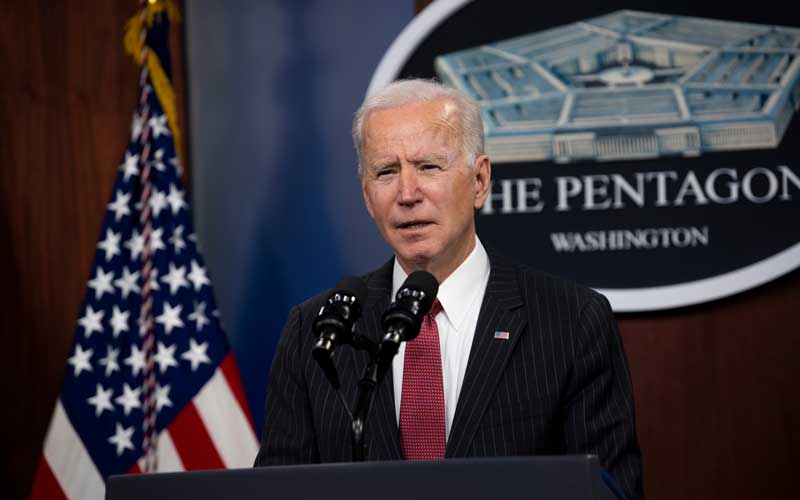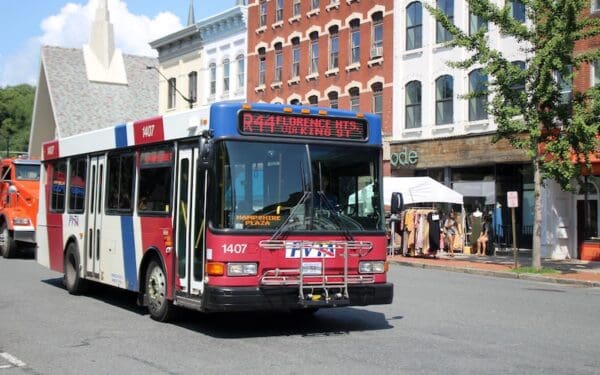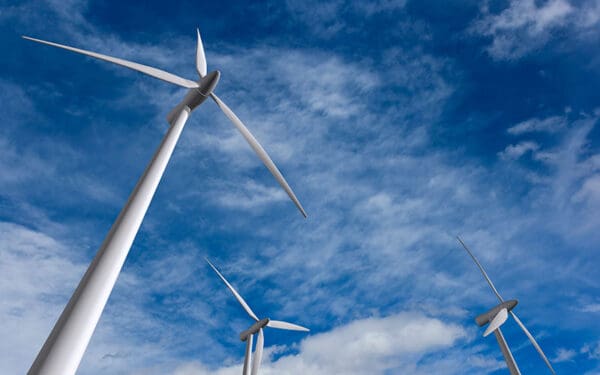
The plan recognizes the role that infrastructure plays in solving climate change. Photo Credit: Shutterstock
If Biden’s recently announced infrastructure plan is enacted, we won’t just have an infrastructure week, we’ll have infrastructure years. The plan – titled the American Jobs Plan – directs eight years of spending and touches on everything from repairing bridges to delivering clean drinking water.
Investing in infrastructure that reduces our reliance on polluting fossil fuels can help solve the climate crisis and improve public health. The Biden administration’s infrastructure package represents a critical investment in our future, infusing much-needed funding to ramp up New England’s transition to a carbon-free economy by 2050. Its focus also aligns directly with work CLF has been doing for decades in New England to combat the climate crisis: cleaning up transportation, updating our power grid, and bolstering energy efficiency.
New England’s Infrastructure Plays a Critical Role in Solving Climate Change
From the roads we drive on, to the ports that handle our goods, to the transmission lines that carry our electricity, infrastructure plays a big part in the climate-damaging gases we emit. We must modernize this infrastructure so that it runs on clean, renewable energy. Otherwise, solving the climate crisis will be next to impossible.
Successfully transitioning New England to a clean energy economy requires a massive overhaul of that infrastructure. We need to drastically increase our use of public transit and electric vehicles and make charging stations more available regionwide. We must update our power grid so that it’s powered by renewable energy that can reach everyone. Even boosting rural broadband will play a role, as it can enable people to drive less and recover more quickly from disaster.
Big investments in clean infrastructure will bolster New England’s economy and create good paying jobs. It can also reduce air pollution – by taking gas guzzlers off the road, for example – which will improve the health of people living in communities already overburdened by dirty air.
What’s Included in Biden’s Infrastructure Plan
The Biden administration’s infrastructure plan has several big actions that will help reduce our reliance on the fossil fuels that cause climate change and harm our health. Some of the highlights include:
- Investing in clean transportation and expanded public transit. The cars, trucks, buses, and more that move us and our goods around are the single largest source of emissions in New England and across the U.S. This infrastructure plan puts $174 billion towards boosting electric vehicles, including incentives for state and local governments to build a national network of charging stations; consumer rebates to make electric cars and trucks more affordable; and funding to electrify at least 20% of our school bus fleet. To cut the number of cars on the road, the plan also includes $85 billion to modernize public transportation, expand public transit systems, and meet rider demand.
- Supporting a clean power grid. The plan includes $100 billion to support a modern, resilient, and clean power grid. This includes incentives to build high-capacity transmission lines to bring clean energy across the U.S., as well as expanded tax credits for clean energy sources like wind and solar.
- Establishing an “energy efficiency and clean electricity standard.” If designed well, this standard could help cut electricity bills and pollution by incentivizing cleaner, more efficient uses of energy – for example, using heat pumps to heat and cool a home instead of a polluting gas or oil furnace. This will help move us toward 100% carbon-pollution free power by 2035. (We look forward to helping improve what the Administration proposes in this area.)
- Funding home and school retrofits. Modernizing these critical buildings will ensure they can run efficiently on clean power and be more resilient to climate impacts.
- Building out broadband. The plan puts $100 billion towards promoting high-speed broadband in underserved areas to help ensure affordable, high-quality, and reliable access for everyone.
- Training a 21st-century workforce. The plan also commits $100 billion for workforce training and development to help dislocated workers find new jobs and gain the skills they need to work in growing fields, like the clean energy industry.
What an Infrastructure Upgrade Looks Like in New England
To transition New England to a clean energy economy, we must accomplish the same goals outlined above: modernize our transportation system, stop using fossil fuels to heat our homes, and power our homes and businesses with renewable energy. However, especially in northern New England where I live, accomplishing these goals can be a challenge.
Encouraging people to buy an electric car is tough when charging stations aren’t widespread. Switching folks to electric heat pumps can be expensive, particularly when older homes aren’t yet weatherized. And powering our lives with clean energy won’t move forward without more transmission lines to move electricity from where it’s often generated (in sparsely populated areas) to cities where more people live.
The Biden infrastructure plan would be a good first step in resolving some of these challenges. With tax rebates that make electric cars cheaper and more charging stations getting built, many in New England would consider electric for their next car. More tax rebates and grants to weatherize and electrify homes would allow people to affordably stop using fossil fuels to stay warm. Moreover, incentives for a transmission buildout would help move electricity from powerful wind farms off our coasts to population centers in southern New England.
CLF has long pushed to transition New England to a clean energy economy and address the impacts of the climate crisis. Many of the elements of the Biden administration’s infrastructure plan would help accelerate our efforts.
What’s Next for the Plan?
Now that the Biden administration has shared its vision, we can expect related legislation to be introduced in Congress soon.
We’ll provide updates as further details on the infrastructure plan emerge and pieces of legislation advance. Meanwhile, we will continue to push each New England state to lead the way with local legislation and policies that will end our addiction to fossil fuels and move us to a just and equitable clean energy economy.
Sign up for our email list to get the latest.



